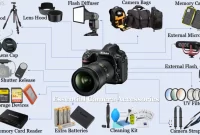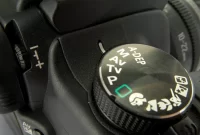Compact cameras are a popular choice for travel photography due to their portability and ease of use. However, they have their pros and cons. In this article, we will explore the advantages and disadvantages of using compact cameras for capturing those memorable travel moments.
Why Compact Cameras are Ideal for Traveling Photographers
When it comes to travel photography, having the right gear can make all the difference in capturing those once-in-a-lifetime moments. While DSLRs are often considered the go-to choice for professional photographers, compact cameras offer a range of advantages that make them ideal for travel. Here are some reasons why compact cameras should be at the top of every traveling photographer’s list:
Portability
One of the biggest advantages of compact cameras is their small size and lightweight design. They are incredibly portable, making them perfect for photographers who are constantly on the go. Whether you’re trekking through rugged landscapes or navigating crowded streets, compact cameras can easily fit into your backpack or even your pocket, ensuring you never miss a shot.
Versatility
Compact cameras may be small in size, but they pack a punch when it comes to features and functionality. Many models offer a wide range of shooting modes, including manual controls, allowing photographers to have full creative control over their images. Additionally, compact cameras often have built-in zoom lenses, enabling you to capture both wide-angle landscapes and close-up details without the need for additional lenses.
Discreetness
Unlike bulky DSLRs that draw attention, compact cameras are discreet and inconspicuous. This can be a huge advantage, especially when traveling to locations where photography may be restricted or when you want to capture authentic, candid moments without disrupting the scene. Compact cameras allow you to blend in seamlessly, resulting in more authentic and natural shots.
Quick and Easy to Use
Compact cameras are designed for simplicity and ease of use. They often have intuitive interfaces and user-friendly controls, allowing photographers of all skill levels to effortlessly capture stunning images. Whether you’re a beginner or a seasoned pro, compact cameras offer a hassle-free shooting experience that is perfect for capturing those spontaneous travel moments.
Backup or Secondary Camera
While many photographers rely on their high-end DSLRs as their primary camera, having a compact camera as a backup or secondary option is highly recommended for travel. Compact cameras serve as a reliable backup in case of any technical issues or emergencies with your primary camera. Moreover, they can also provide a different perspective and allow you to experiment with various shooting styles to diversify your portfolio.
In conclusion, compact cameras offer a myriad of benefits for traveling photographers, including portability, versatility, discreetness, ease of use, and the ability to serve as a backup or secondary camera. While they may not match the image quality and advanced features of DSLRs, compact cameras are an excellent choice for capturing beautiful travel moments without the burden of heavy gear.
Advantages of Compact Cameras: Portability and Convenience
Compact cameras offer several advantages for travel photography, making them a popular choice among both amateur and professional photographers. The following are two key benefits of using compact cameras:
1. Portability
One of the main advantages of compact cameras is their small size and lightweight design, which makes them highly portable. Unlike bulkier digital SLR cameras, compact cameras can easily fit into a pocket or small bag, allowing photographers to carry them conveniently wherever they go.
Due to their portability, compact cameras are ideal for travelers who want to capture spontaneous moments and scenes on the go. Whether you’re exploring a bustling city, hiking in the mountains, or lounging on a sandy beach, a compact camera can be effortlessly taken out and used to capture those precious moments without weighing you down.
2. Convenience
Compact cameras are designed to be user-friendly and straightforward, offering a hassle-free photography experience. They often come with pre-programmed shooting modes, making it easier for beginners to achieve great results without having to delve into complex settings.
Additionally, compact cameras typically have a fixed lens that covers a versatile focal range, allowing photographers to capture wide shots, zoom in on subjects, and even achieve macro photography. This eliminates the need to carry multiple lenses and simplifies the shooting process.
Moreover, compact cameras are equipped with autofocus systems that can quickly and accurately focus on subjects, ensuring sharp and well-focused images. This is particularly useful when taking spontaneous shots or capturing fast-moving subjects during travel.
In conclusion, the advantages of compact cameras for travel photography lie in their portability and convenience. Whether you’re a professional photographer or an amateur enthusiast, compact cameras provide the ability to capture high-quality images while being lightweight and easy to use, making them the perfect choice for capturing your travel adventures.
Understanding the Limitations of Compact Cameras
Compact cameras have become increasingly popular among travelers as they offer convenience and portability. However, it’s essential to recognize their limitations to make informed decisions about their use for travel photography.
1. Limited Image Quality
Due to their small size, compact cameras generally have smaller image sensors, resulting in lower image quality compared to larger DSLR or mirrorless cameras. This limitation becomes noticeable when capturing images in low light conditions or when trying to achieve greater image detail.
2. Restricted Manual Controls
Compact cameras often lack extensive manual controls found in professional-grade cameras. This limitation can limit the ability to adjust settings such as aperture, shutter speed, and ISO to achieve specific creative effects or overcome challenging shooting conditions.
3. Limited Zoom Range
While some compact cameras offer impressive zoom ranges, many have limitations in their telephoto capabilities. This restricts the ability to capture distant subjects with the same level of detail and clarity as cameras with interchangeable lenses.
4. Limited Versatility
Compact cameras are designed with simplicity in mind, which means they often lack additional features and accessories commonly available with larger cameras. Interchangeable lenses, external flashes, and advanced shooting modes are typically not available or severely limited on compact models.
5. Limited Performance in Challenging Conditions
Compact cameras might struggle in challenging conditions such as fast-paced action, low light, or extreme weather. Their autofocus and continuous shooting capabilities may not be as responsive or accurate as those found in more advanced cameras.
While compact cameras offer convenience, travelers should be aware of their limitations. Understanding these limitations enables photographers to make the most of their compact cameras while also knowing when a more capable camera might be necessary to capture certain shots.
Choosing the Right Compact Camera for Your Travel Adventures
Compact cameras are a popular choice for travel photography due to their portability and versatility. However, with so many options on the market, it can be overwhelming to decide which compact camera is best suited for your travel adventures. In this article, we will explore the pros and cons of compact cameras for travel photography to help you make an informed decision.
Pros of Compact Cameras for Travel Photography
1. Size and Portability: Compact cameras are lightweight and easy to carry, making them perfect for travelers who are always on the go. They can easily fit in your pocket or small bag, allowing you to capture moments spontaneously without the need for bulky equipment.
2. User-Friendly: Compact cameras are designed with simplicity in mind. They often come with user-friendly interfaces and automatic settings, making them ideal for beginners or travelers who want to quickly capture great shots without getting into technical details.
3. Versatility: Many compact cameras offer a wide range of shooting modes and creative options, allowing you to experiment and capture different types of shots during your travel adventures. Some models even have manual controls that can satisfy the needs of more advanced photographers.
Cons of Compact Cameras for Travel Photography
1. Limited Image Quality: Compared to larger DSLR or mirrorless cameras, compact cameras generally have smaller sensors, which can result in lower image quality, especially in low-light conditions. However, advancements in technology have significantly improved the image quality of compact cameras over the years.
2. Limited Optical Zoom: Compact cameras often have fixed lenses or limited zoom capabilities. This can make capturing distant subjects or achieving certain creative effects more challenging. However, some advanced compact cameras offer impressive zoom ranges to overcome this limitation.
3. Less Control and Customization: While compact cameras are user-friendly, they may lack the level of control and customization options that professional photographers desire. If you are someone who enjoys fine-tuning every aspect of your photography, you may find the limited settings of compact cameras restrictive.
Conclusion
Now that you understand the pros and cons of compact cameras for travel photography, it’s easier to determine whether they are the right choice for you. Consider your personal preferences, budget, and the types of shots you want to capture during your travel adventures. Remember, the perfect compact camera is the one that suits your needs and helps you preserve your travel memories in the best possible way.
Conclusion
Compact cameras have both advantages and disadvantages for travel photography. On the positive side, they are lightweight, portable, and easy to use, making them ideal for capturing quick shots while on the go. However, their small sensors may result in lower image quality compared to DSLRs. Ultimately, the choice depends on an individual’s preferences and priorities.




